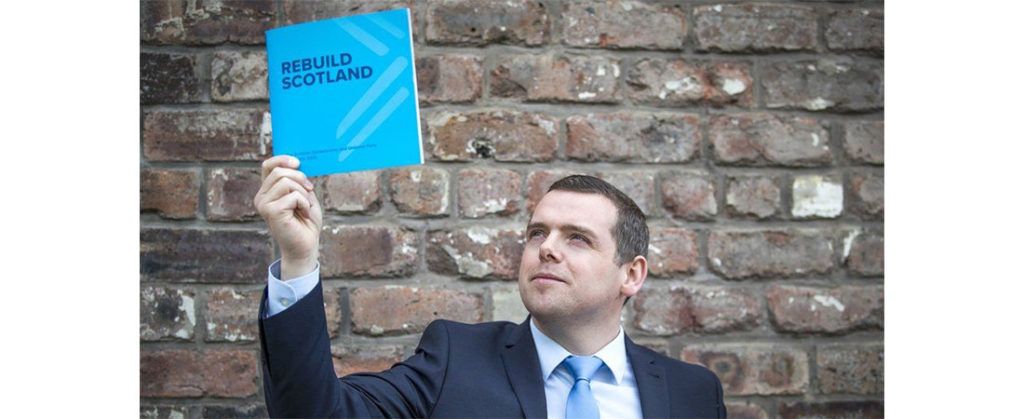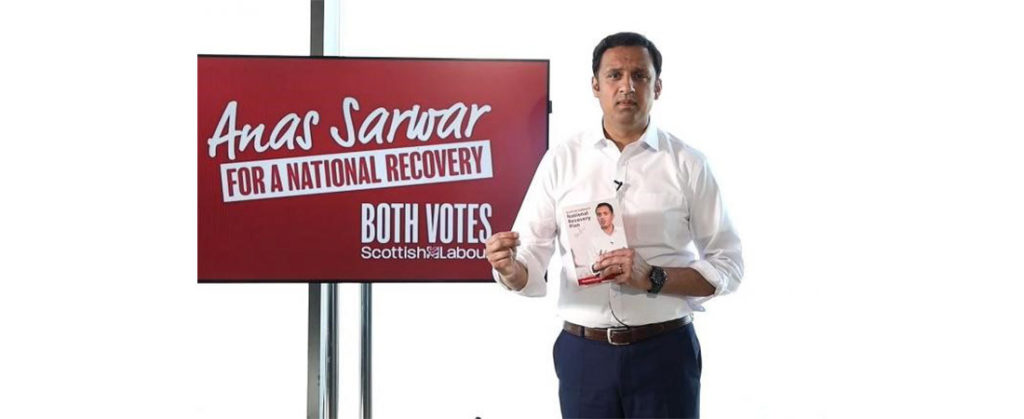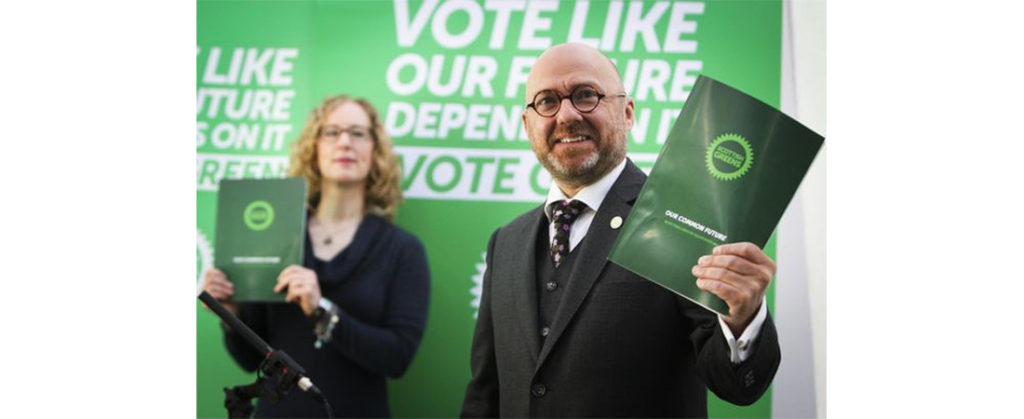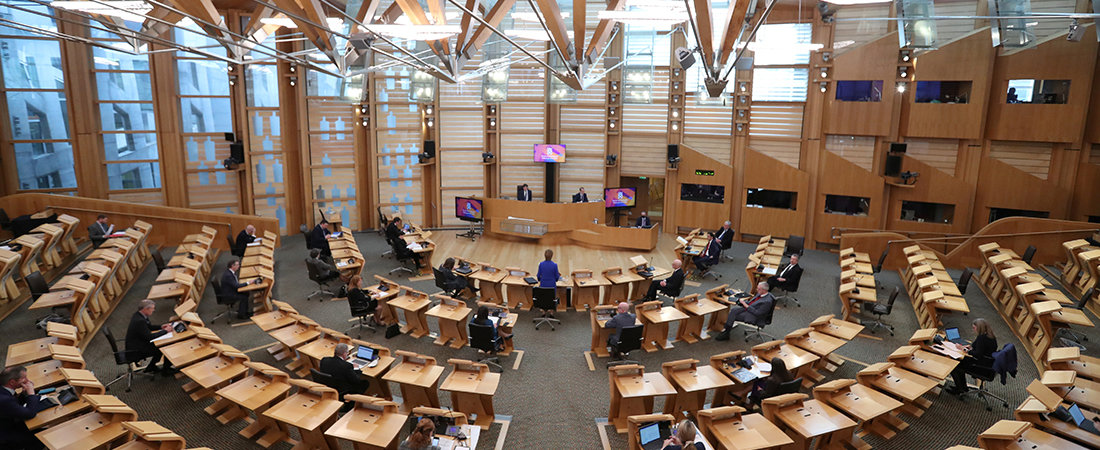As the Scottish Parliament election enters its final stages, the competing visions for how Scotland will recover from the COVID-19 pandemic have now been published.
With the constitution the key dividing line in this election, there is much consensus to be found in the detail of the parties’ policies for recovery. All parties are committed to an investment-led recovery, and there is a strong emphasis on the protection of health spending and improved support for social security.
In this round-up, we provide an initial analysis of the party manifestos and the top five policy commitments from each of the main parties.
Questions? Portland is supporting our clients track the Scottish Parliament elections and assess the impact that they will have on business. Drop us a line at: [email protected] to find out more about how we can support you.
Jump to:
- Scottish National Party
- Scottish Conservatives
- Scottish Labour
- Scottish Liberal Democrats
- Scottish Greens
Scottish National Party

The SNP – whilst dominant in Scottish politics – faces a formidable challenge in this election: how to communicate a fresh and bold vision for Scotland after fourteen years in government.
As much as the constitution is the central focus of this election – and the commitment to an independence referendum is a major motivating factor for many SNP voters – the SNP has understood that they also need a bold retail offering to reassure Scottish voters that they have a compelling and fresh vision for Scotland, backed by solid vote-winning policies.
The requirement for the country to recover from the pandemic has enabled the SNP to outline a bold new vision for the kind of Scotland that they seek to convince the electorate we should create as we recover.
In their analysis, the IFS has highlighted that the SNP’s programme comes at a significant net cost – with an expanding commitment to universalism in key policy areas. The Institute makes the point that paying for these policies, in the context of a tight fiscal environment, will require complex trade-offs and potential tax rises or cuts to other areas of public spending. This, of course, is a challenge facing governments across the UK – but in common with the Government at Westminster, the SNP will view these difficult choices as ones to be made when recovery is assured.
SNP: The top 5 policy commitments
- Independence referendum: The SNP has committed to holding an independence referendum once the immediate COVID crisis has passed – with the First Minister adding that she expects this to be in the first half of this coming Parliament.
- Home-building and economic stimulus: There is a strong emphasis on economic stimulus, with plans to invest over £33 billion over the next 5 years in infrastructure through a new National Infrastructure Company. A number of economic challenge funds have been announced, including a Rural Entrepreneur Fund and Womens Business Centres. A commitment to invest £3.5bn to deliver 100,000 affordable homes by 2032 is similarly designed to stimulate Scotland’s economic recovery.
- Public ownership and universalism: The SNP continues its commitment to universalism – extending free access for all to dental care, breakfast and lunches for all primary aged children, and the introduction of a National Care Service. The Party has also committed to bringing ScotRail into public ownership next year.
- Climate change and just transition: A commitment to making Scotland a world-leader in tackling climate change is a clear thread running through the SNP manifesto, with commitments to retraining through the Energy Transition Fund, decarbonisation of Scotland’s public transport system and heating of homes, a deposit return scheme, and a £100m Green Jobs Fund.
- Protecting public services: The SNP have also placed an emphasis on protecting public services – with a pledge to increase frontline NHS spending by at least 20%, and pledging £1bn to tackle the attainment gap in education.
Scottish Conservatives

“It’s the economy, stupid.” The infamous words of James Carville, President Bill Clinton’s strategist, certainly ring loud and clear in this manifesto.
Although Douglas Ross is no Bill Clinton, the Scottish Conservatives have provided a strong focus in their manifesto on economic stimulus in an effort to play to their base.
‘Rebuild Scotland’ focuses on revving up the engine of Scotland’s economy to pull it away from the potential post-pandemic economic brink. Unionists need not fear, there is still an iron-clad commitment against a second independence referendum. The manifesto is framed as a choice between recovery or an independence referendum.
This manifesto re-focuses the Scottish Conservatives’ message away from a purely anti-independence stance and toward a positive alternative for Scotland. Although it features many Conservative policies and provides a costing document for policies, the ambition to cut income tax while upping spending is potentially not a realistic goal unless coupled with cuts to other areas of spending.
The Scottish are playing to their base on key issues – with classic Conservative policies across crime, policing, free speech, the armed forces, and the economy. This manifesto seems to be seeking to appeal to the voters the Scottish Conservatives won over in 2016 and 2017. It will come as no surprise that there are many North East-specific policies packed into this manifesto to shore up what has become a Conservative heartland. ‘Fair Share for the North East’ has been a significant focus in recent years for the Scottish Conservatives and is also seen as the key to the powerhouse of the Scottish economy.
Scottish Conservatives: The top 5 policy commitments
- Constitution: The Conservatives continue to stake their claim as Scotland’s main Unionist opposition that has served them so well in elections since 2016, with another cast iron commitment to oppose a second independence referendum. The manifesto makes a late subtle shift in strategy – juxtaposing the pursuit of a referendum with alternative, classic Conservative policies for Scotland
- Full fibre broadband rollout: the first policy priority in the Conservatives’ alternative programme for Scotland is to deliver full fibre broadband for every household and business in Scotland by 2027. The Party holds many rural seats which have been affected by the severely delayed broadband rollout in Scotland. This policy commitment also focuses on future-proofing the digital network to ensure any developments in mobile phone network coverage will be able to be quickly integrated in Scotland.
- £2 billion extra for our NHS: this includes a double lock legislation to guarantee the NHS’ budget to increase every year by Barnett consequentials or 2% more than inflation, whichever is the highest. By 2025 this would see the NHS’ budget in Scotland rise by over £2 billion, although to meet all the commitments this will likely need to be closer to £3 billion.
- £500 skills grant for everyone and 3,000 more teachers: pitched as an incentive for lifelong learning with a ‘Right to Retrain’ for every adult in Scotland who would receive £500 to be spent on training every year. There is also a commitment to recruit 3,000 new teachers across Scotland in an effort to highlight the SNP’s weakness on its track record on education.
- More local policing: following the controversial introduction of Police Scotland in 2013 which centralised policing in Scotland, the Scottish Conservatives are looking to guarantee and increase the local police presence in many communities around Scotland. Policies around crime double down on tougher sentencing and justice for victims.
Scottish Labour

Scottish Labour’s manifesto has been styled as a National Recovery Plan to reflect the emphasis their new Leader Anas Sarwar has placed on recovery from the pandemic as the Party’s central campaigning issue.
It sets out their immediate policies for the next 12 months to help Scotland recover from COVID-19 along with a longer-term vision for Scotland. All of this is underpinned by 5 national missions: jobs recovery, NHS and social care recovery, education recovery, climate recovery and community recovery.
Labours’ plans are awash with big spending commitments and giveaways. Analysis from the Institute for Fiscal Studies concluded that Labour’s “short-term plans exceed the Scottish Government’s unallocated funding for this year and wouldn’t be deliverable without additional UK government funding.”
Although there are plans to increase tax for those earning over £100,000, it is likely taxation measures will not go far enough to cover Labour’s National Recovery Plan. However, Labour is realistic that they are not going to form the next Government at Holyrood – their mission in this campaign is to get voters to “take another look” at the Party that once dominated Scottish politics but has been in the wilderness for over a decade. As the last Party to publish their manifesto, we will have to wait for next week’s polling to see whether their 115-page almanac of eye-catching giveaways can pique the voters’ interests.
Scottish Labour: The top 5 policy commitments
- Jobs: A striking policy, Labour will guarantee everyone aged under 25 who does not have a job, the long-term unemployed and every disabled person without a job, who are not already benefiting from other job schemes, a job within the Scottish public sector with a wage paid for six months by the Scottish Government.
- Social Care: Labour have also committed to create a National Care Service – a policy initially proposed by former Leader Richard Leonard and which has been adopted by the SNP. With several other parties also committed to its creation, Labour will want to show they are driving policy in Scotland, even if that’s from opposition.
- Education: Labour have committed to the development of a Personal Comeback Plan (PCP), based on an individual assessment, for every young person. As the SNPs record on education has left a lot to be desired, Labour are making certain the public know they are focussed on education.
- Climate: With COP26 coming to Glasgow, and with polling showing soft Labour voters are fair game for the Scottish Greens, Scottish Labour have placed a strong emphasis on proving their green credentials. Amongst other commitments, they plan to establish the Scottish Energy Development Agency to coordinate the growth in renewable energy production including in skills and training.
- Economy: Re-energising town centres, Labour will provide a £75 prepaid card to every adult in Scotland to be spent in non-food retail businesses and has voiced support for an online sales tax.
Scottish Liberal Democrats

The Liberal Democrats’ manifesto ‘Put Recovery First’ seeks to set out an alternative to the constitution-focused parties and sets out a ‘third way’ with a fully federal UK and an economic plan with jobs at its heart.
As the Lib Dems target SNP seats in the Highlands and seek to retain their island seats, they’re focusing on devolving more power locally in Scotland, improving education and rebuilding the healthcare system.
With a significant threat brewing for the Scottish Liberal Democrats from the Scottish Green Party, federalism and green policies feature significantly in the manifesto to try and head off the competition.
Many of the policies in the manifesto seek to draw in voters who were attracted to the Scottish Conservatives because of Ruth Davidson’s friendlier brand of Conservatism but are not enamoured with the new leader Douglas Ross, and also those who have had a bad taste in their mouth left by Brexit.
Scottish LibDems: The top 5 policy commitments
- Federalism: this ‘third way’ would give more power and a stronger voice to Holyrood, including over UK-wide decisions. Although the primary focus of this federal policy is on UK federalism, it also focuses on redistributing power more locally in Scotland, a direct attack on centralisation which has happened under the SNP.
- World-leading education: focusing on a post-pandemic education recovery to help children bounce back and adults retrain. In an attempt to attract people into teaching and more teachers to Scotland the LibDems have pledged to increase the starting salary to £30,000, cut class sizes, and increase the number of support assistants.
- Tackling the mental health crisis: with a target of 15% of new health spending to be directed towards mental health services which will see more trained mental health specialists for community centres, GPs, hospitals, workplaces and schools. The LibDems aim to double the number of psychiatrists, psychologists and counsellors by increasing grants for these training and university courses.
- Green recovery: this puts the environment at the heart of many of the LibDem’s policies by aiming to move 1 million homes to zero emissions heating while also tackling the fuel poverty crisis and investing in the new skills necessary to support this new part of the economy and help to adjust many Scottish jobs away from the fossil fuel industry.
- Childcare: the LibDems aim to cut the costs of childcare for parents and increase the number of childcare places for those over the age of 2 with the ambition to extend this to all those above the age of 1 within the parliament and increasing childcare provisions for those parents who are in academic education or vocational training.
Scottish Green Party

Despite their relatively humble parliamentary representation, the Scottish Greens wield significant political power.
As a pro-independence party, they have been the natural allies of the minority SNP Scottish Government – and they have been adept at extracting policy concessions from Nicola Sturgeon’s Government in return for their parliamentary support.
The coming election could see the Scottish Greens end up as kingmakers once again, and the Party has made no secret of its ambition to one day be in Government.
‘Our Common Future’ is the Scottish Greens plan for Scotland – and in the year that COP26 comes to Glasgow, it is focused on radical policies and a significant programme of investment to support a climate change transition, backed by borrowing and increased taxes on high-earners.
Beyond the constitution and economic recovery, climate change is one of the key issues of this election in the minds of voters and the Greens will be hoping that their bold policies can capture the zeitgeist and lead to a substantial increase in their parliamentary representation.
Scottish Greens: The top 5 policy commitments
- Fairer taxation and economic recovery: A number of revenue-raising new taxes – targeted at corporations and the wealthy – are proposed to fund a manifesto that outlines significant spending commitments. The package of taxation measures includes a 1% annual wealth tax for millionaires, the replacement of Air Passenger Duty with a Frequent Flyer Levy, the replacement of Council Tax and an urgent one-off windfall tax on the extraordinary profits made by larger companies as a result of the pandemic.
- Climate emergency: The Greens commitment to tackling the climate emergency includes significant investment in transport, renewable heating systems for homes and renewable energy. This includes £450m to be invested in renewables including a new deal for onshore wind with at least 70% of the supply chain sourced domestically, and a support programme for the tidal sector. There are bold policies on extractive industries, with a proposal to end the granting of new licenses for oil and gas exploration, and a withdrawal of support for hydrogen produced from fossil fuels. The Greens also proposed a Good Business Council to advise on the delivery of a green economic recovery.
- Universal Basic Income and a four day working week: The Greens proposals on social security and reform of the world of work are equally bold, with proposals to introduce a pilot of Universal Basic Income and to transition to a four day working week without any loss of pay.
- Constitution: The Greens will support and campaign for an independence referendum within the next 5 years, and membership of the European Union as an independent nation.
- Housing: The Greens have set an ambitious target to support the building of 70,000 homes by 2026 and a further 50,000 homes between 2027 and 2032, 70% of which should be for social rent.

